Evora was established by the Romans and had its halcyon days during the 17th century when the Portuguese royalty became residents. It is noted for the white building facades as well as the popular wrought iron and tile accents.

One of the major tourist attractions is the Royal Church of St. Francis which, from the exterior, is similar to dozens of other churches one might encounter throughout Portugal. It is located within easy walking distance of the main square.
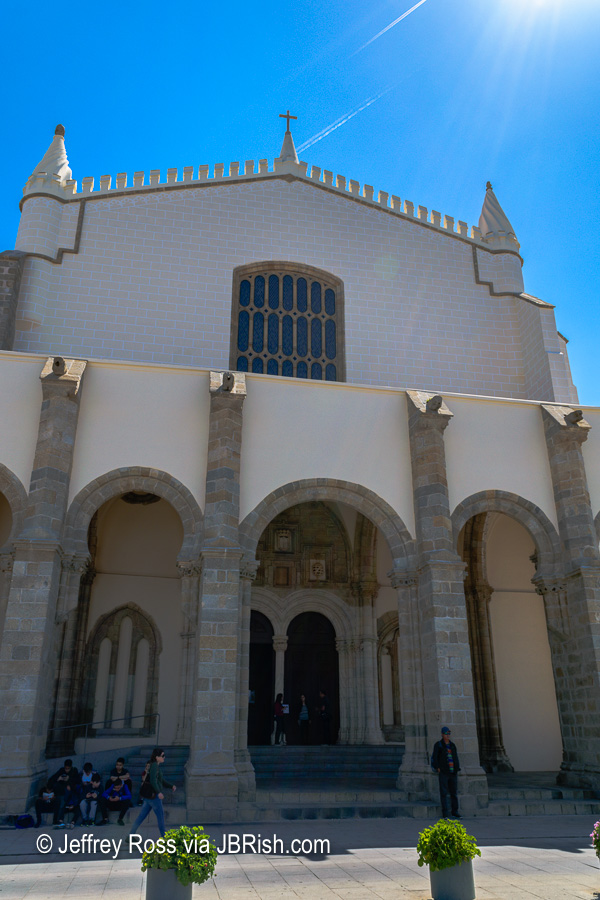
The building has arched arcades that open to an interior courtyard.
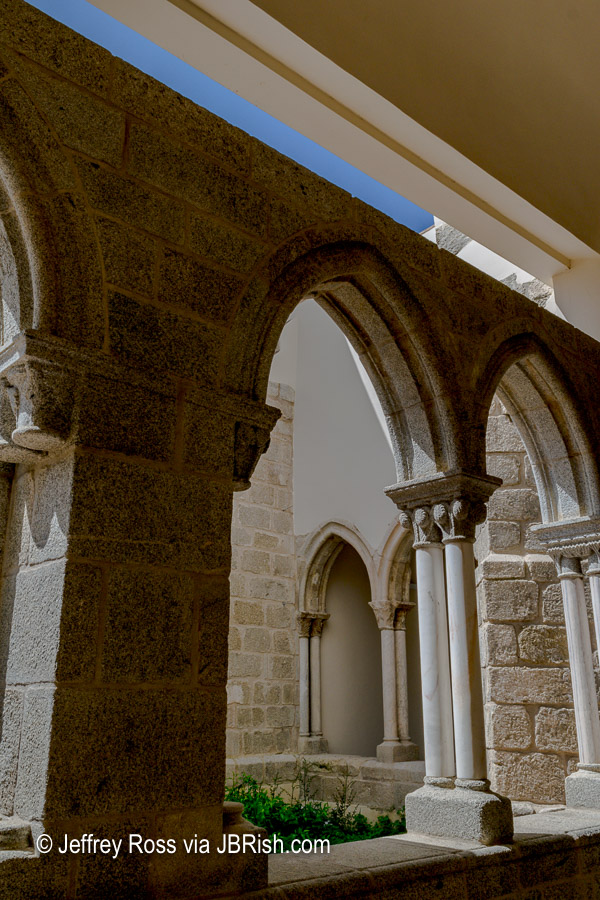
Naturally, the church has beautifully detailed altars with ornate artwork.
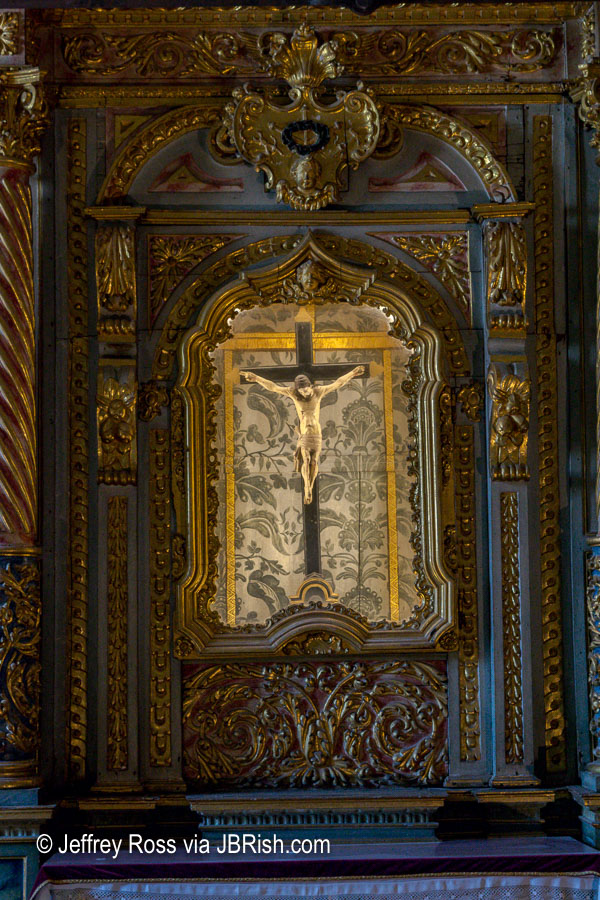
What distinguishes the Royal Church of St. Francis from almost every other church in the world is that it houses one of the most famous sights in Evora – the famous Capela dos Ossos (Bones Chapel) dating back to the 1500s.
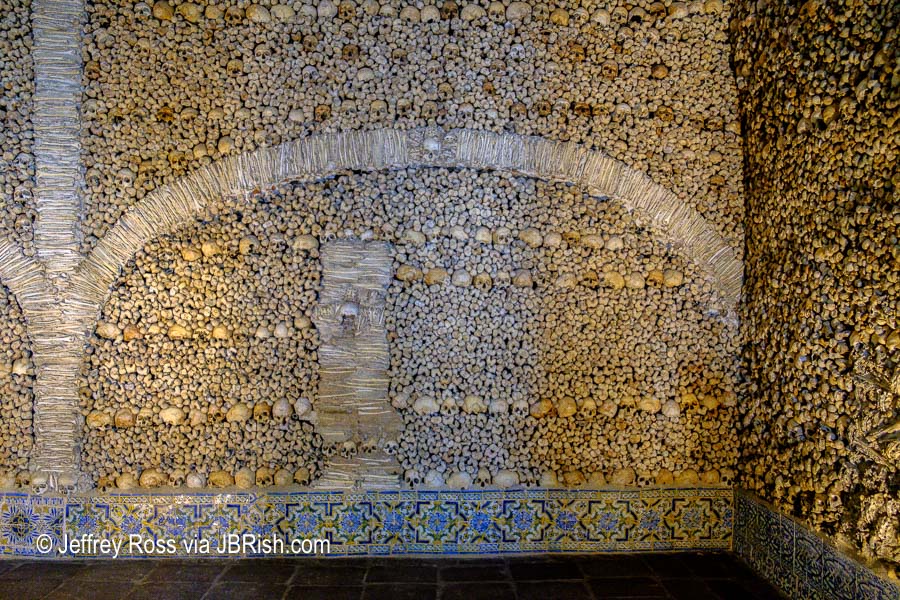
“The Chapel’s story is a familiar one. By the 16th century, there were as many as 43 cemeteries in and around Évora that were taking up valuable land. Not wanting to condemn the souls of the people buried there, the monks decided to build the Chapel and relocate the bones.” – https://www.atlasobscura.com/places/portugals-chapel-bones

Rather than trying to create a macabre setting, the monks thought they were paying homage to Evora’s deceased and hoped this would provide a place of tranquility and meditation. Bones were chosen to add decorations to the architectural elements of the chapel.
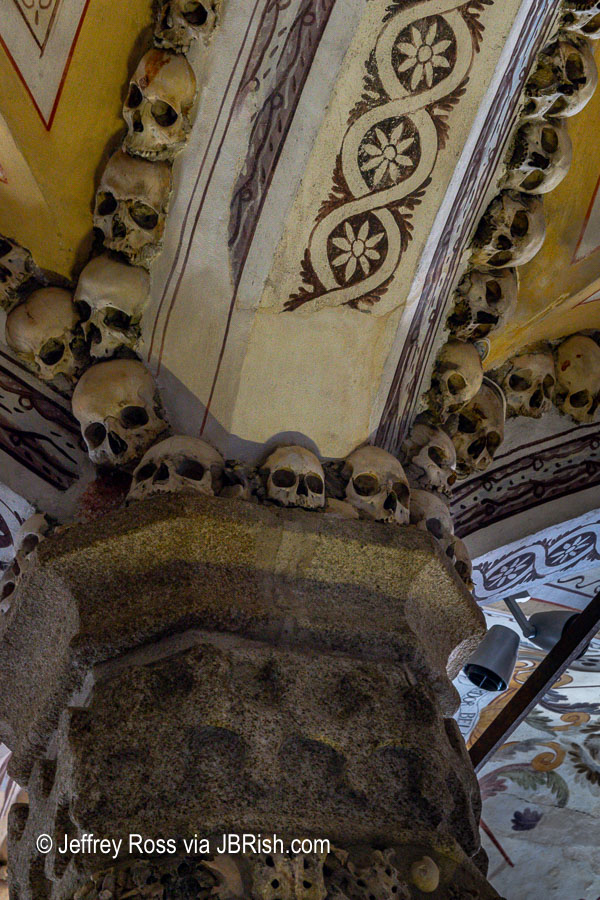
Here is a close up of one of the support columns. Note the partial skull, second from the bottom of the frame. This may have been damaged accidentally, but bones have been intentionally removed as collector items and visitors are now restricted from getting too close to the walls.
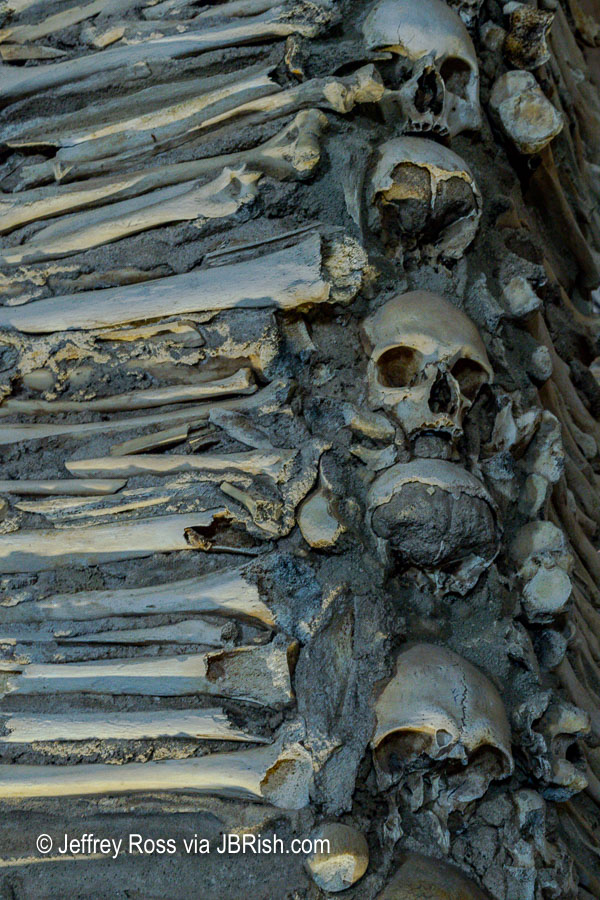
A very poignant display was of the Pompei-like presentation of the bodies below which, at one time, were hanging from the walls by a ropes as complete desiccated specimens until one fell. Now they rest peacefully in a glass coffins.
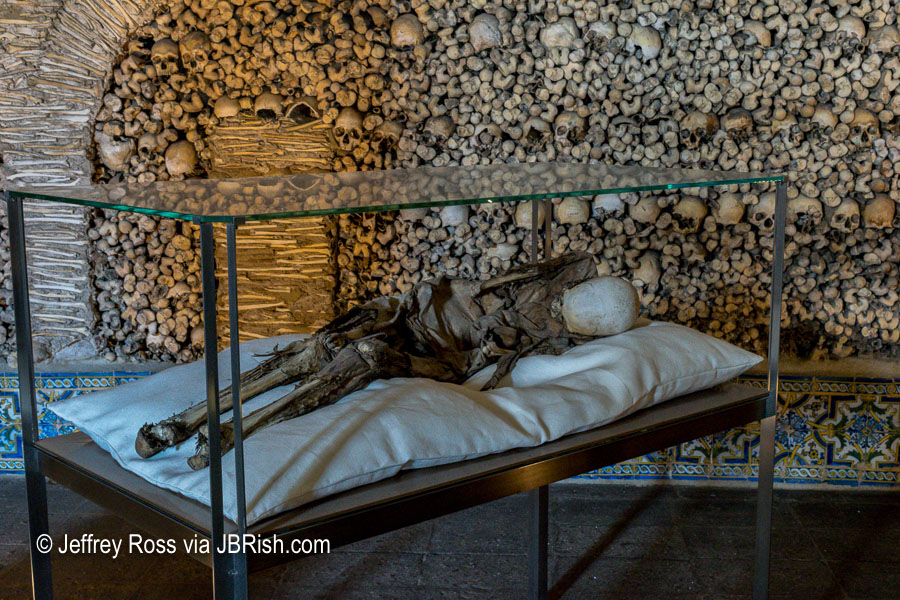
There are stories associated with these bodies and you can read about them at the Ancient Origins website.
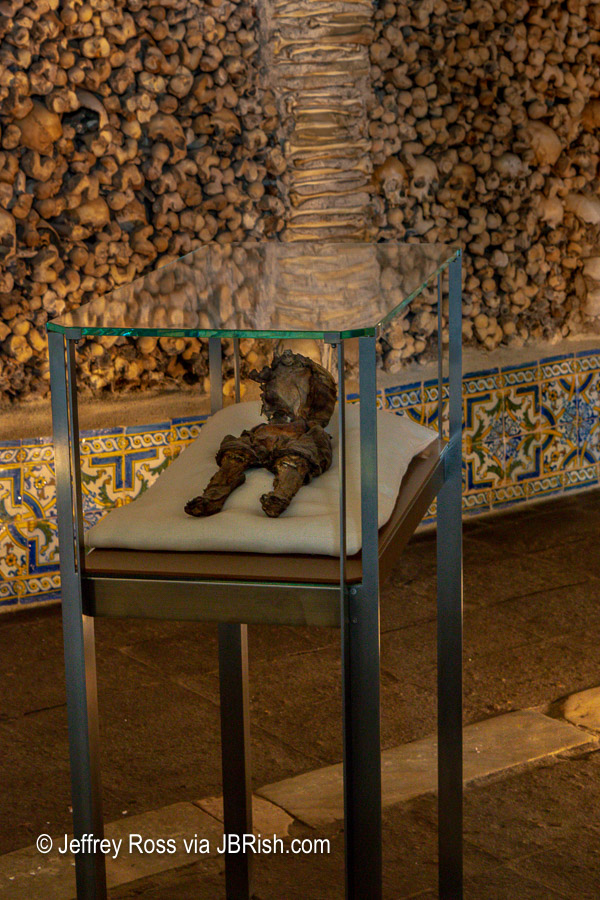
One can only imagine how many bones are located within this structure and the time and patience it took to construct this edifice.
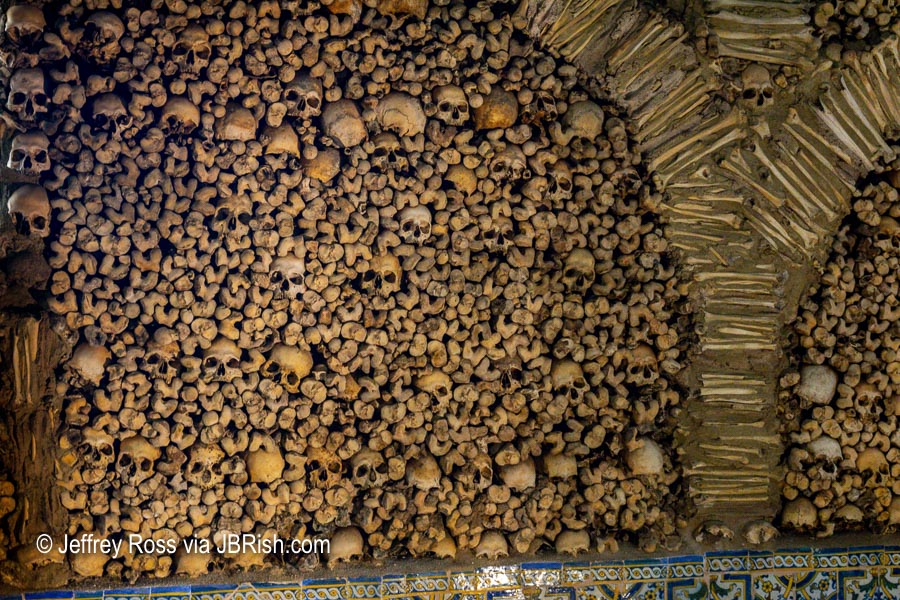
As one leaves the chapel to visit the main sanctuary, a somewhat morbid signs harkens to those leaving:
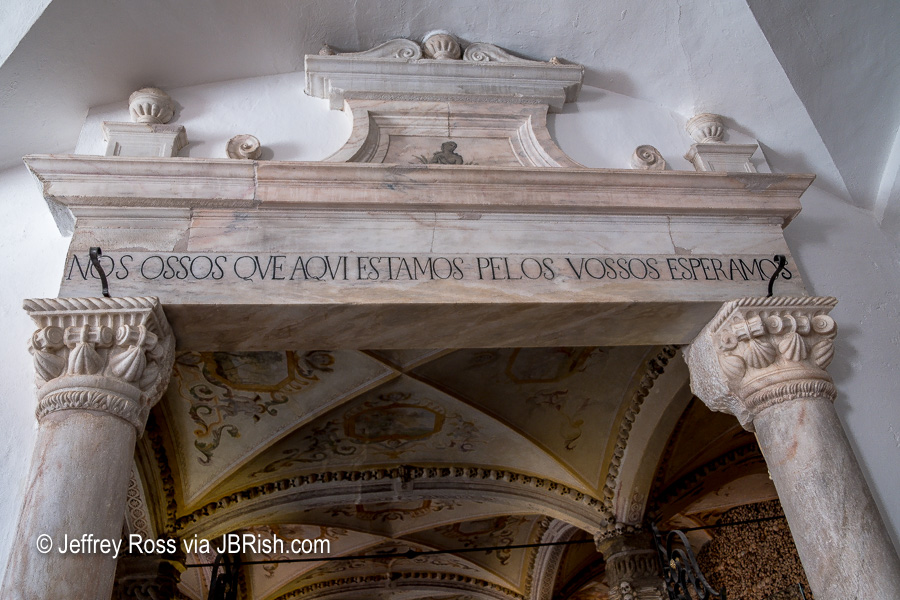
“We bones in here wait for yours to join us.”
More things to see and do in Evora in the next Portugal and Spain post!
**********
***************
Continue reading about our trip to Portugal and Spain.
Read more Hiking and Exploration posts HERE
**********
All original content on this blog is copyrighted by Jeffrey B. Ross with ALL Rights Reserved. While reference links back to JBRish.com are appreciated and encouraged, please acquire approval for any reproduction of original content from this website.
©Jeffrey B. Ross 2014 – 2018 – JBRish.com